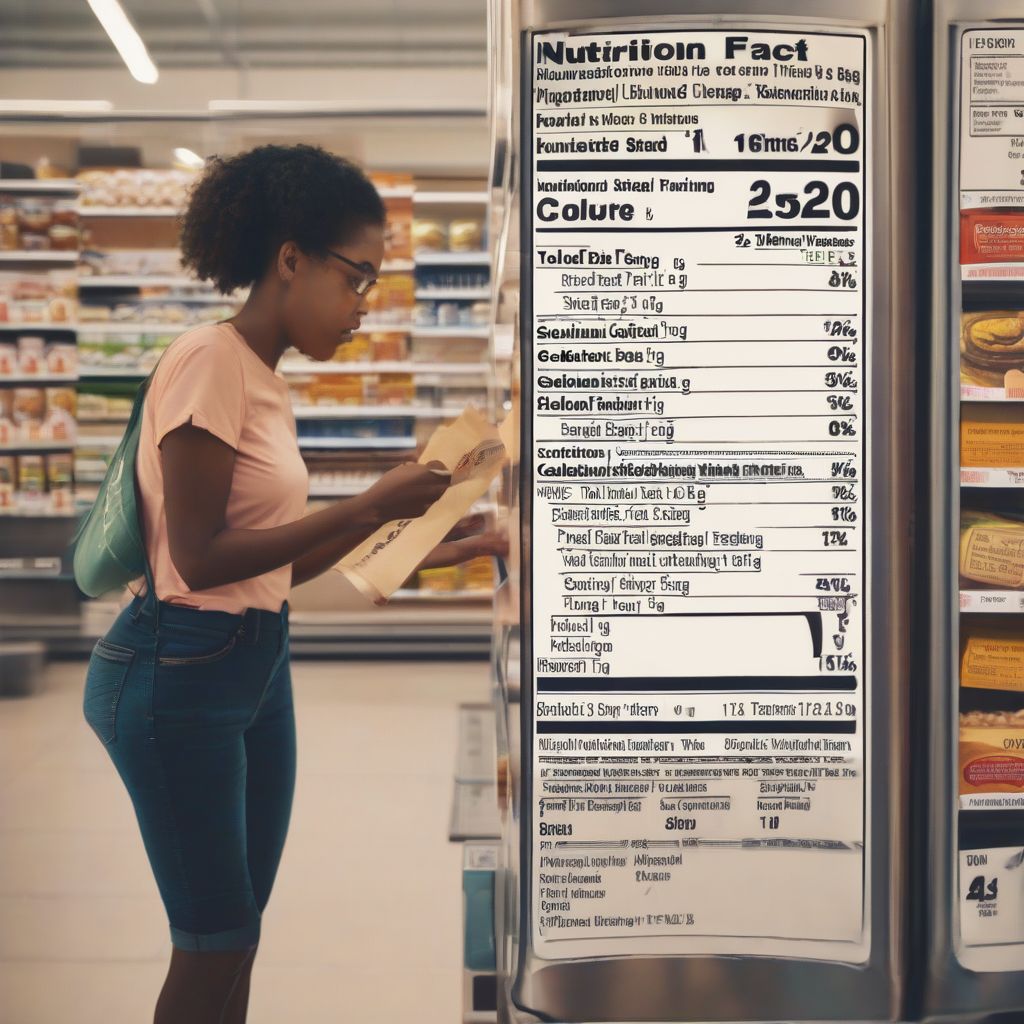Have you ever stood in the grocery aisle, staring at a wall of food, feeling completely overwhelmed? You’re not alone! Deciphering nutrition labels can feel like cracking a secret code. But understanding these labels is key to making informed food choices that support your health and well-being. This guide will empower you to confidently navigate nutrition labels and make choices that align with your dietary goals.
Understanding the Basics of a Nutrition Label
Every packaged food item carries a nutrition facts label, a standardized panel designed to provide key information about the product’s nutritional content. This label is your window into what you’re putting into your body.
Serving Size: The Foundation of Your Analysis
The first thing you should check is the serving size. All the information on the label is based on this specific amount. Pay close attention, as the serving size might be smaller than what you typically consume. “A common mistake is assuming the entire package is one serving,” says registered dietitian Emily Jones, author of “Fuel Your Body Right.” “Always check the serving size to accurately calculate your intake.”
Calories: Balancing Energy In and Out
Next, look at the calories per serving. This tells you how much energy the food provides. Balancing calories consumed with calories burned is crucial for weight management.
Macronutrients: The Building Blocks of Your Diet
Macronutrients—fats, carbohydrates, and proteins—provide energy and are essential for various bodily functions.
- Fats: Check for total fat, saturated fat, and trans fat. Aim to limit saturated and trans fats, which can contribute to heart disease. “Healthy fats, like those found in avocados and nuts, are important for brain function and overall health,” adds Jones.
- Carbohydrates: Look for total carbohydrates, dietary fiber, and sugars. Fiber is beneficial for digestion and can help regulate blood sugar levels. Be mindful of added sugars, which can contribute to weight gain and other health issues. “Focus on complex carbohydrates, like whole grains and vegetables, for sustained energy,” Jones recommends.
- Protein: Protein is crucial for building and repairing tissues. Check the grams of protein per serving.
Micronutrients: Vitamins and Minerals for Optimal Health
Micronutrients, including vitamins and minerals, are essential for various bodily functions. The label lists key vitamins and minerals, such as vitamin D, calcium, iron, and potassium.
Percent Daily Value (%DV): A Helpful Guide
The %DV tells you how much a serving contributes to your daily intake of a specific nutrient, based on a 2,000-calorie diet. 5% DV or less is considered low, while 20% DV or more is considered high. This helps you quickly assess if a food is a good source of a particular nutrient.
Making Informed Choices: Beyond the Basics
Now that you understand the components of a nutrition label, let’s explore how to use this information to make healthier choices.
Ingredient List: Decoding the Fine Print
The ingredient list is another valuable tool. Ingredients are listed in descending order by weight. This means the first ingredient makes up the largest proportion of the product. Look for whole foods listed first and be wary of long lists of unfamiliar ingredients. “The fewer the ingredients, the better,” advises Jones.
Claims on the Label: Navigating Marketing Tactics
Food manufacturers often use claims like “low-fat” or “sugar-free” to attract consumers. However, it’s crucial to understand what these claims actually mean. “Don’t be swayed by marketing hype,” cautions Jones. “Always check the nutrition facts panel to verify the claims.”
Comparing Products: Making Side-by-Side Assessments
When choosing between similar products, compare their nutrition labels side by side. Look for options with lower amounts of saturated fat, trans fat, added sugars, and sodium, and higher amounts of fiber, vitamins, and minerals.
Practical Tips for Reading Nutrition Labels
- Start with the serving size: This is your baseline for understanding the nutritional content.
- Focus on the nutrients you want to limit: Pay attention to saturated fat, trans fat, added sugars, and sodium.
- Look for nutrients you want to increase: Aim for foods rich in fiber, vitamins, and minerals.
- Compare labels: Choose products that align with your dietary goals.
- Don’t be fooled by marketing claims: Verify claims by checking the nutrition facts panel.
- Use food tracking apps: Many apps can help you scan labels and track your intake.
 Reading Nutrition Labels
Reading Nutrition Labels
Conclusion
Reading nutrition labels doesn’t have to be a daunting task. By understanding the key components and using the tips outlined in this guide, you can empower yourself to make informed food choices that support your health and well-being. Remember, small changes can make a big difference over time. Start by incorporating these strategies into your grocery shopping routine and watch as you become a more confident and health-conscious consumer. What strategies do you use for reading nutrition labels? Share your tips in the comments below!



